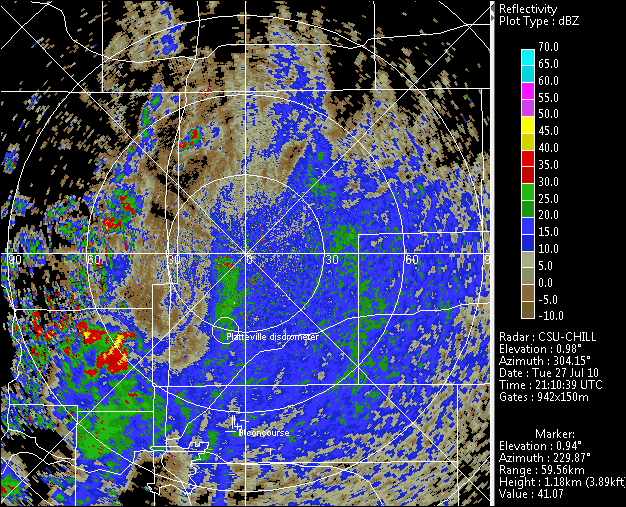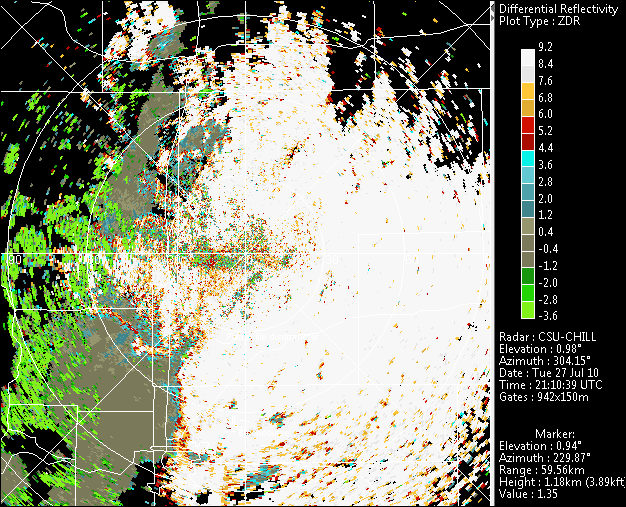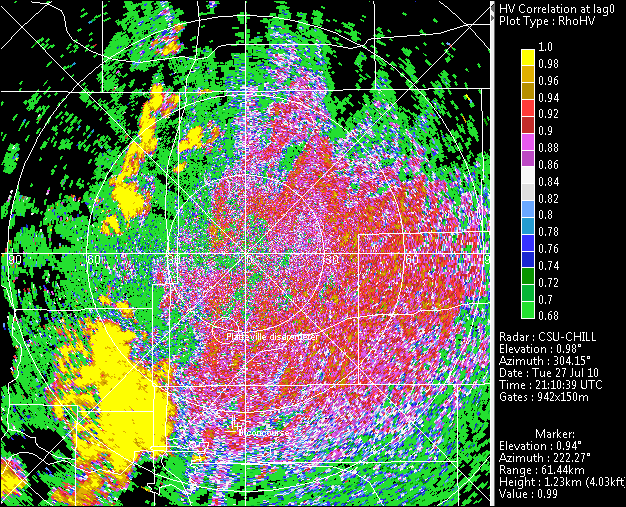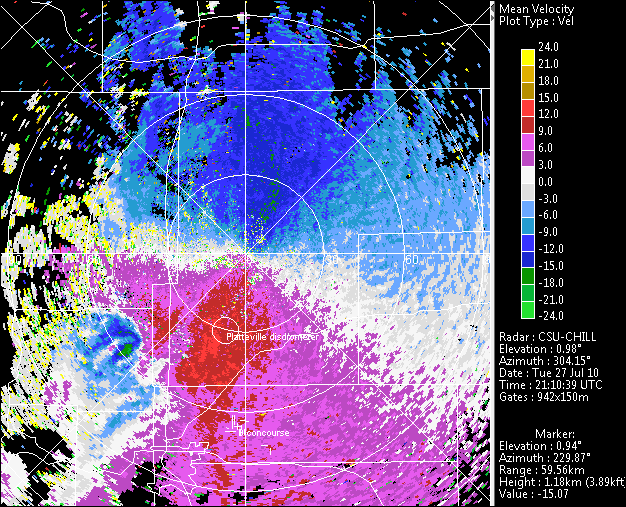WXlog/20100727 Summer PBL: Difference between revisions
Pat kennedy (talk | contribs) (Created page with "By late July, insects have developed fairly large body sizes with distinctly oblate shapes. This causes the S-band Zdr values returned from typical afternoon "clear air" echo...") |
Pat kennedy (talk | contribs) No edit summary |
||
| Line 1: | Line 1: | ||
By late July, | By late July in northeastern Colorado, insect populations have increased and many individuals have developed fairly large body sizes with distinctly oblate shapes. As a result, detectable radar echoes in the planetary boundary layer (PBL) are often observed out to ranges of ~100 km. The S-band Zdr values returned from typical afternoon "clear air" echoes in the boundary layer can become very positive (often > +9 dB) due to the insects' flattened shapes. These characteristics are shown in the example images below. At the time of this PPI scan, rain showers were in progress over Boulder County (~60 km SW of CHILL). The less oblate raindrop shapes vs. the insect shapes give less positive Zdr levels in the showers. Also, the H to V signal return correlation coefficient (rhoHV) is consistently higher in the rain than in the insect regime. The high variability among the airborne insect body shapes and orientations probably accounts for the correlation reduction. Finally, outflow from the Boulder County rain showers locally alters the large scale northerly flow shown by the radial velocity pattern in the boundary later. | ||
[[Image:27jul2010 summer PBL z.png|center]] | [[Image:27jul2010 summer PBL z.png|center]] | ||
Latest revision as of 06:53, 27 March 2020
By late July in northeastern Colorado, insect populations have increased and many individuals have developed fairly large body sizes with distinctly oblate shapes. As a result, detectable radar echoes in the planetary boundary layer (PBL) are often observed out to ranges of ~100 km. The S-band Zdr values returned from typical afternoon "clear air" echoes in the boundary layer can become very positive (often > +9 dB) due to the insects' flattened shapes. These characteristics are shown in the example images below. At the time of this PPI scan, rain showers were in progress over Boulder County (~60 km SW of CHILL). The less oblate raindrop shapes vs. the insect shapes give less positive Zdr levels in the showers. Also, the H to V signal return correlation coefficient (rhoHV) is consistently higher in the rain than in the insect regime. The high variability among the airborne insect body shapes and orientations probably accounts for the correlation reduction. Finally, outflow from the Boulder County rain showers locally alters the large scale northerly flow shown by the radial velocity pattern in the boundary later.



